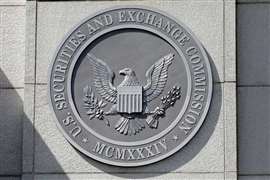ESG reporting and the changing generational and regulatory landscape
07 April 2024
Younger generations want their investments to align with their values. The related ESG regulations can make that a challenge for OEMs.
Reporting environmental, social and governance (ESG) data — a company’s non-financial data intended to help investors and stakeholders better understand whether the company should receive a valuation premium — is becoming both a necessary and challenging reality. At the recent annual meeting of the Association of Equipment Manufacturers (AEM), Dan Romito, consulting partner for energy-focused financial services company Pickering Energy Partners, discussed the latest ESG reporting requirements, the reasons behind them, and what they mean for equipment OEMs.
Retirement Fears
 Dan Romito, consulting partner for energy-focused financial services company Pickering Energy Partners. (Photo: Pickering Energy Partners)
Dan Romito, consulting partner for energy-focused financial services company Pickering Energy Partners. (Photo: Pickering Energy Partners)
According to Romito, millennials — those born between 1981 and 1996 — hold a dramatically different worldview than baby boomers, particularly when it comes to retirement. Many boomers are of an age — 55 to 73 years old — in which they are either already retired or preparing for imminent retirement. Such is not the case for millennials and the younger Generation Z (born after 1997).
“When you look at how the millennials and Gen Z look at the world, the one thing that we are scared to death of is retirement,” Romito said. “When I graduated grad school, I got married, I bought my first condo, and two months later, there was a financial crisis.” He added that the stress of that crisis made millennials worry about not being able to retire.
Other statistics, such as CEO pay, which is on average 300 times that of average workers, and the decline in wage growth for college graduates since 2000, contribute to millennial’s anxiety about retirement, Romito said.
Additionally, the retirement planning landscape has changed for younger generations.
“When you’re talking about the main vehicle for retirement, the millennials and Gen Z — we don’t have the luxury of pensions,” Romito said. “Those are gone.” He added that “the days of any employee sticking around with a company for 30 years are probably statistically gone.”
Focus on ESG
These realities have caused younger generations to instead focus predominantly on their 401(k) investments, according to Romito’s presentation. Millennials and Gen Z are consistently outpacing older generations in terms of 401(k) contributions, with both groups having increased their 401(k) contributions since 2020 at a higher rate than other generations.
The younger generations are also more concerned about ESG issues. Romito’s presentation revealed that 70 percent of millennials and Gen Z are “very concerned” about the environment versus 35 percent of baby boomers. The numbers are similar regarding social issues, with 65 percent of millennials/Gen Z “very concerned” compared to 30 percent of boomers.
As such, younger people are looking for firms managing their retirement plans to align their investment strategies with ESG-related considerations. According to Romito’s data, approximately 90 percent of millennials/Gen Z want their investments aligned with their personal values.
For asset managers, this results in a difficult balancing act between achieving consistent alpha, or beating the market, and addressing decarbonization and sustainability.
Regulatory Challenges
According to Romito, the regulatory environment isn’t doing investors any favors when it comes to making sound ESG-related investments — and by extension, the companies tasked with ESG reporting.
“The one thing that I want everyone in this room to take away from this is the acronym TCFD — the task force for climate related financial disclosure,” Romito said. The TCFD was established by the international Financial Stability Board to, according to the TCFD website, “develop recommendations on the types of information that companies should disclose to support investors, lenders, and insurance underwriters in appropriately assessing and pricing a specific set of risks — risks related to climate change.”
According to Romito, TCFD is now embedded in regulations around the world.
“Whether it’s California, whether it’s the SEC, whether it’s the European Union — all of them are endorsing this framework that essentially outlines how a company is preparing for climate related risks,” he said.
Affected regulations include the SEC sustainability reporting rules, which were finalized in early March, as well as two bills in California: the Climate Corporate Data Accountability Act (SB 253) and the Climate Related Financial Risk Disclosure Act (SB 261). The latter is identical to the SEC rules, which surprised many by eliminating Scope 3 reporting. Such is not the case, however, for SB 253.
“The long and short of State Bill 253 is it does require Scope 1, 2 and 3 reporting,” Romito said, adding that Scope 3 is a particular challenge because it requires information from an organization’s entire supply chain. “This comes down to a data exercise,” he said. “Larger suppliers, larger companies are going to be requiring their smaller suppliers, smaller vendors to give them data, because they are now on the hook from a regulatory perspective to report it.”
 Data quality is important to investors from an ESG perspective because it helps them prove to stakeholders why they are investing in the companies that they are. (Photo: AdobeStocker by Miha Creative)
Data quality is important to investors from an ESG perspective because it helps them prove to stakeholders why they are investing in the companies that they are. (Photo: AdobeStocker by Miha Creative)
Romito’s presentation showed that SB 253 will apply to any company doing business in California that has total revenues in excess of $1 billion.
Another hurdle in reporting concerns the provenance of the data being reported.
“The main takeaways on the California bill and the SEC climate disclosure mandate are metrics, and targets,” Romito said, adding that superficial anecdotes about one’s company will no longer be acceptable.
“Millennials in particular, but more importantly, the regulatory markets want data to validate what you are claiming,” he said. “So, if you are unique, how unique are you? If you have a focus on X, Y or Z, to what degree — what is the magnitude of that focus.”
According to Romito, data quality is important to investors from an ESG perspective because it helps them prove to stakeholders why they are investing in the companies that they are.
Speaking to Power Progress separately about data validation, Romito explained the evolution of this requirement.
“Data collection and disclosure traditionally was a binary exercise: do you have the data, or don’t you have the data?” he said. “And if you had it and you disclosed it, people just accepted that was the data point. Today — in the last three years — emissions data in particular is treated guilty until proven innocent. You have this data point, but how did you get it? Before, no one really asked how did you get it. They would just assume or accept the data point as it was given.”
Romito said reporting today requires communicating the method by which the data was acquired.
“If you ask me for my methane intensity, I say here’s my methane intensity,” he said. “OK, how did you get that? We got it through this process. Here’s the validating documentation associated with it. You can tear this apart, that data point is the data point, have fun tearing it apart, because we have 100 percent confidence in it.”
Supporting the data validations requirements will mean companies are going to have to make changes to the way they gather and support the ESG data they report.
“Having an infrastructure in place that has the data point, the corresponding documentation or the validating documentation all in one centralized location, that’s the definition of having your act together,” Romito said.
Not Going Away
Romito said he believes some companies are experiencing a false sense of security and believing that these climate disclosure mandates will be delayed. Romito said he doesn’t think that’s going to happen. However, for companies that are somewhat paralyzed by what can seem to be an insurmountable task at the outset, Romito said companies can begin by taking a three-step approach.
“So right now today — what do you track?” he said in a separate conversation with Power Progress. And then within what we track, Do we have 100 percent confidence in that particular number? If we don’t, how do we get ourselves in a position to where we have 100 percent confidence in what we track today?
“Then we compare what we track today with what the regulatory environment is asking us for, and where are the gaps, and then putting in place remedied protocols and processes to account or address those gaps.”
Romito said it’s then necessary to align the reporting with your industry peers.
“What are our peers, or what are industry leaders, or what do we deem best in class, and what are they disclosing? And what is the gap between that?” he said.
STAY CONNECTED



Receive the information you need when you need it through our world-leading magazines, newsletters and daily briefings.
CONNECT WITH THE TEAM










